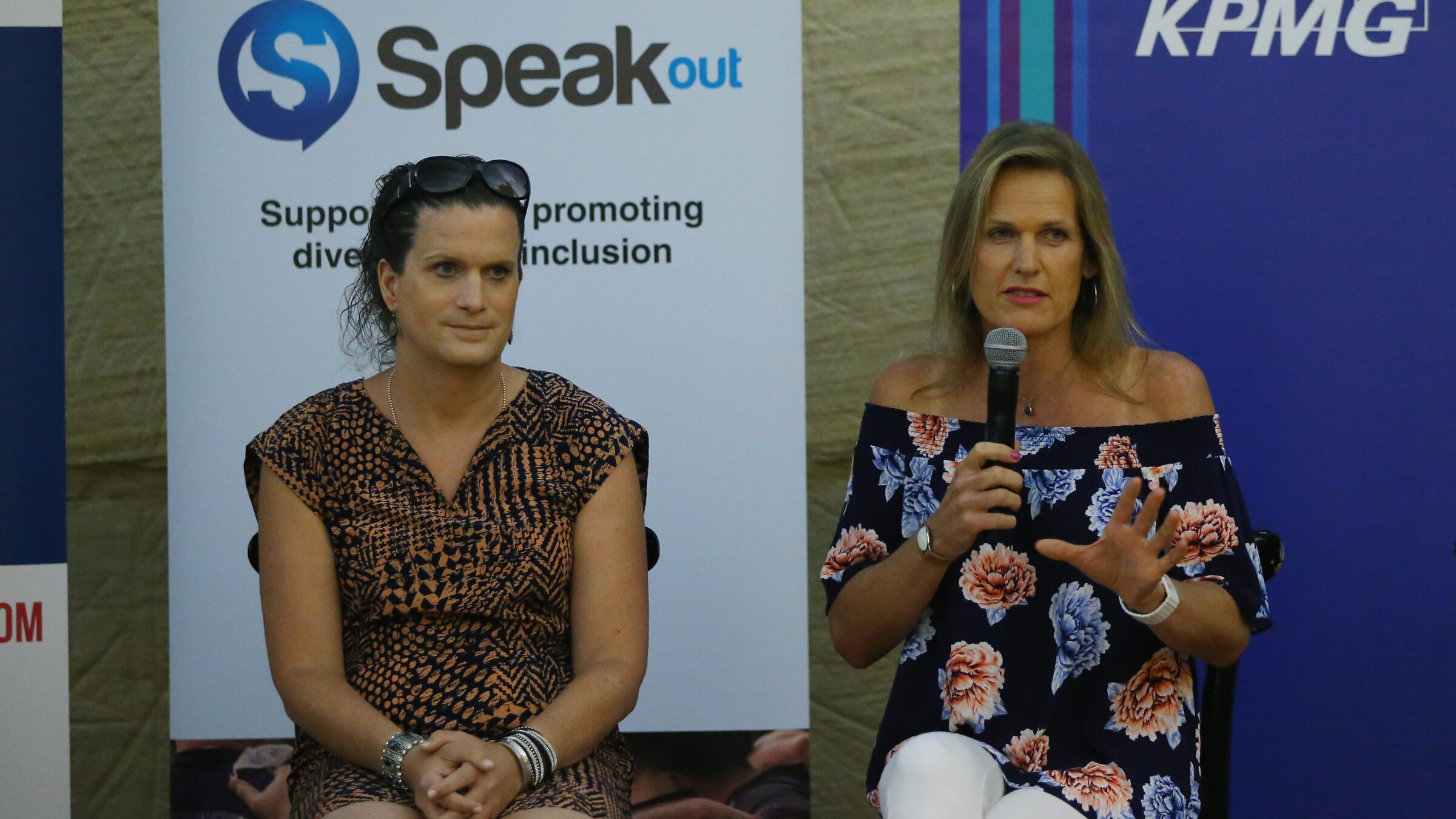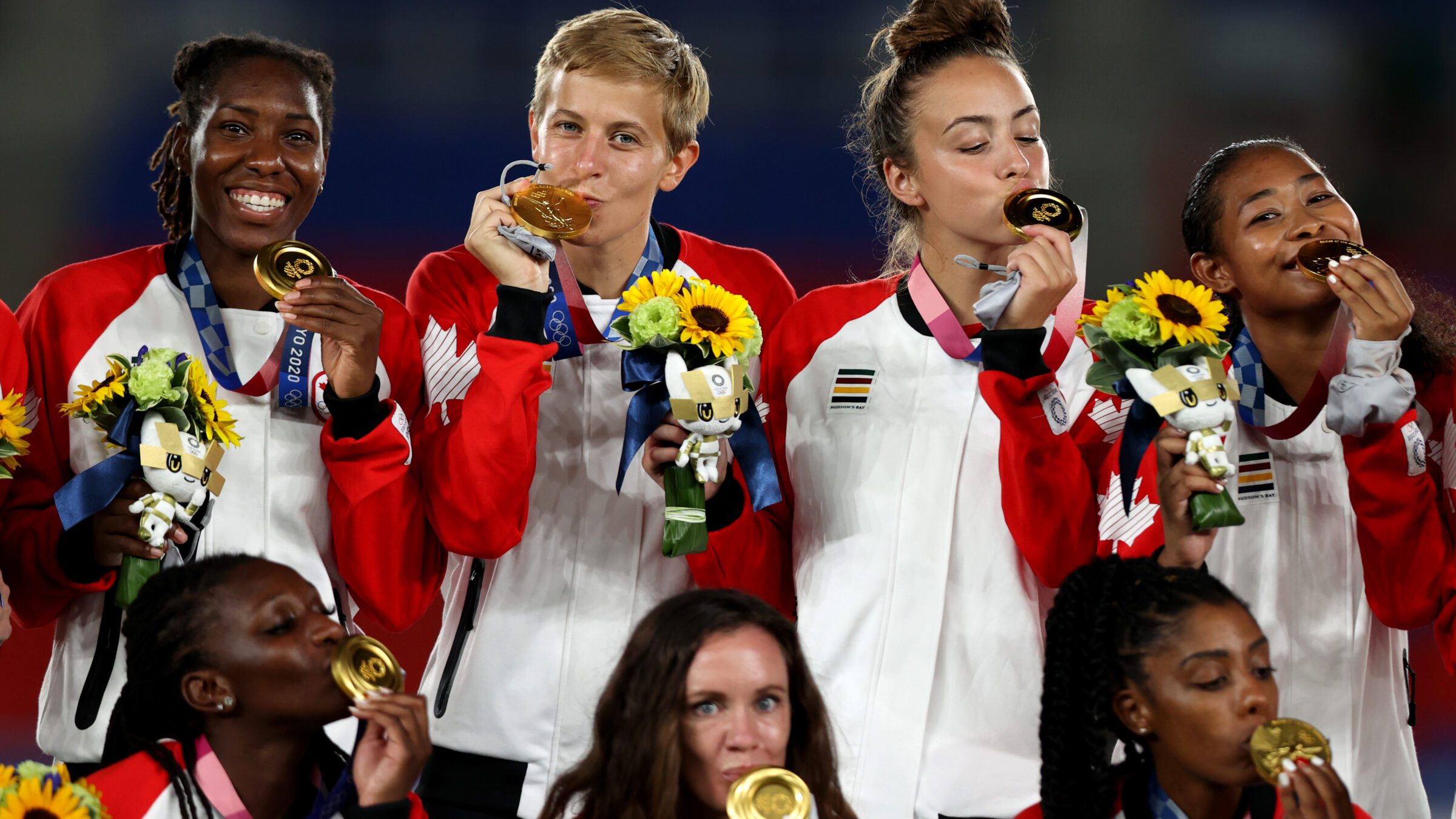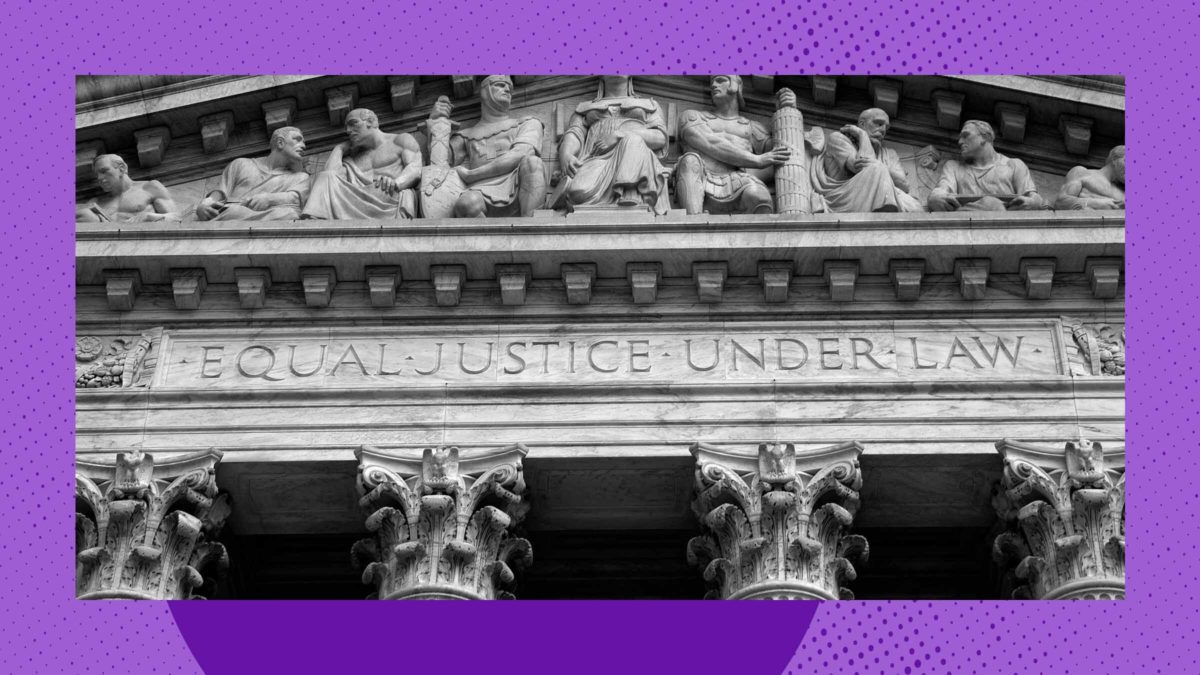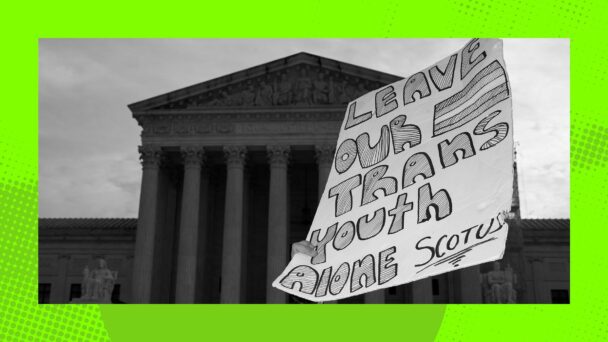In June, the Supreme Court announced it will hear two cases about whether the Constitution allows states to ban transgender athletes from playing on sports teams that match their gender identity. If the justices decide that it does, they would give anti-trans lawmakers the green light to pass even more laws that discriminate on the basis of gender identity—not only in sports, but in all aspects of public life.
The two cases, Little v. Hecox and West Virginia v. B.P.J., are similar in nature, but deal with laws with slightly different scopes. The ban challenged in Hecox—the Fairness In Women’s Sports Act, which Idaho Republican lawmakers passed in 2020—affects transfeminine athletes at the high school and collegiate levels. West Virginia’s law, which is at issue in B.P.J., is broader, and applies to any public schools—all the way down to elementary schools—that sponsor “interscholastic, intercollegiate, intramural, or club athletic teams.”
Sports governing bodies, governments, and courts have spent decades trying to decide how to regulate transgender participation in sports—specifically, deciding whether transitioning offers athletes a disproportionate advantage when competing on a new team that matches their identity. This is part of a long tradition of supposed concerns about the “integrity” of women’s sports: In 1966, for example, competitors at the European Track and Field Championships had to appear nude or semi-nude before the judges in order to “prove” their eligibility to compete.

Worley, left, at an event in 2017 with Mianne Bagger, a trans professional golfer (Photo by Don Arnold/WireImage)
In 2015, Canadian cyclist Kristen Worley challenged the International Olympic Committee’s transgender inclusion policy, which allowed trans athletes to compete in the Olympics only if they’d received gender confirmation surgery. In court, Worley alleged that this policy, which was adopted in 2003 before the 2004 Summer Games in Athens, forced transgender athletes to harm their bodies just to compete in sports in ways that cisgender athletes did not.
At the time, international anti-doping rules prevented many transfeminine athletes who received gender confirmation surgery from getting an exemption to use testosterone as part of their hormonal treatments, which would allow them to mirror naturally occurring testosterone levels in female athletes. Because the IOC would not grant such an exemption, Worley alleged that it was putting her health at risk.
The Canadian Human Rights Tribunal ruled in Worley’s favor, and the IOC adopted a new policy for transgender athletes in 2016 ahead of the Rio Olympics: Going forward, trans athletes would not need to undergo any form of surgery before competing at the elite level internationally. But as part of the new policy, the IOC also recommended that bodies that oversee Olympic sports adopt testosterone limits for trans athletes. The IOC provided suggested guidelines, and allowed administrators to use these guidelines or adopt their own.
This led to a patchwork system in which different sports had different policies in place regarding the inclusion of transgender athletes—for example, sports like rowing and athletics adopted stricter testosterone limits than the IOC suggested, while sports like archery and shooting did not. In some cases, different governing bodies adopted different rules for the same sport—for example, USA Rugby adhered to the IOC’s 2016 policy as late as 2021, even while World Rugby was taking steps to ban trans women altogether from international competition.
Meanwhile, in the United States, conservative activists who were reeling from Obergefell v. Hodges, the 2015 case in which the Supreme Court legalized same-sex marriage, began looking for a new wedge issue to use to curtail LGBTQ rights. The rapidly shifting landscape of rules for transgender athletes in sports provided a convenient place to start. After Idaho lawmakers passed the Fairness In Women’s Sports Act in 2020, nine states passed similar laws the following year.
Today, 29 states have passed laws or otherwise directed state agencies to ban transgender women from playing on teams consistent with their gender identity. In February 2025, the Trump administration issued an executive order rescinding federal funding for schools that allowed transfeminine athletes to compete with female athletes. Organizations such as the NCAA and the United States Olympic and Paralympic Committee (USOPC) have updated their policies to comply with Trump’s order, and the administration has threatened to sue the state of California unless it follows suit.
The rules shifted again at the international level after the Tokyo Games in 2021, when Quinn, a member of the Canadian women’s soccer team, became the first-ever openly transgender, non-binary Olympian to win a gold medal. (Quinn goes by one name.) The IOC’s latest standard requires administrative bodies to research whether transgender women athletes have a disproportionate advantage, rather than presume the existence of such an advantage based on testosterone levels. It also specified that each sport should adopt its own guidelines, instead of having the option to adopt the IOC’s suggested guidelines, as the 2016 policy allowed.
Already, this change has eroded much of the progress that trans athletes had made in their quest for fair and equal treatment. Since the adoption of the new IOC framework, World Athletics, World Aquatics and World Rugby have banned transgender athletes who did not suppress puberty before their pre-adolescent years. That means anyone who began medically transitioning after the onset of puberty would be banned from competing in female categories. World Athletics, the global regulatory body for track and field, also announced it will subject female athletes to chromosomal testing. Chromosomal testing was previously used in many sports to ensure that only women were competing in women’s competitions, but was stopped due to its high costs and ugly discriminatory impact.

Quinn (back row, second from left) celebrates after winning gold, August 2021 (Photo by Naomi Baker/Getty Images)
Incredible though it may seem now, the preceding history shows that the sporting landscape was not always so hostile to trans athletes. When the Fairness In Women’s Sports Act passed in 2020, no openly transgender athlete had participated in an Olympic Games. Most sports were operating under rules that, at the very least, positioned transgender female athletes to have a shot at competing at the highest levels. Cultural attitudes towards transgender people in America were changing, but no state had successfully barred trans people from bathrooms that matched their identity, or banned the provision of gender-affirming medical care. Part of the reason the issue was on Idaho Republicans’ radar is that at the time, Idaho was one of the few states that even had an openly transfeminine athlete at the collegiate level: Lindsay Hecox, a trans woman attempting to make the women’s track team at Boise State University.
In other words, the Supreme Court will hear Little v. Hecox and West Virginia v. B.P.J. in a “different universe” than the one that existed when these cases began winding their way through the legal system more than four years ago, says Joshua Block, an ACLU attorney who is representing the respondents in the West Virginia case. The United States is in the midst of a full-fledged anti-trans backlash, in which conservative-controlled courts have played an integral role. Just this past summer, the Supreme Court upheld a Tennessee law banning transgender youth medical care, and the justices will consider a challenge to a state-level ban on “conversion therapy” in the upcoming term, too.
“I think it’s really important to understand that these are laws that are designed to exclude transgender girls entirely from the athletic program in any capacity,” Block says. But these cases are about more than just sports—they are about the ability of anti-trans lawmakers to freely discriminate against their constituents without fear of legal repercussions. The Court’s six-justice conservative supermajority might not have started the movement to exclude trans people from public life. But they are in a position to finish it.





